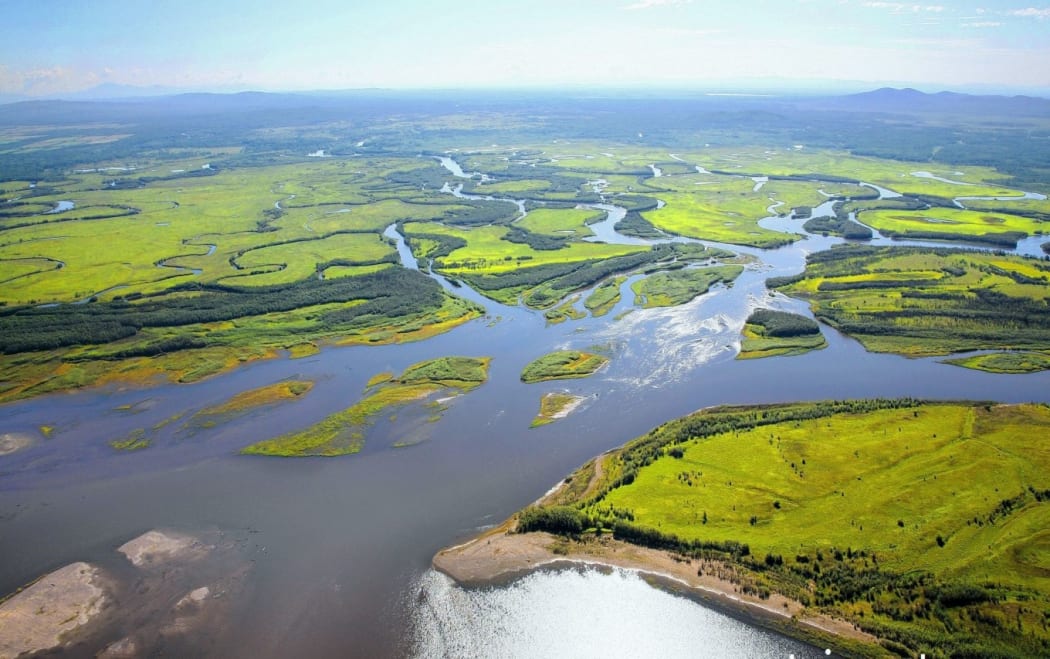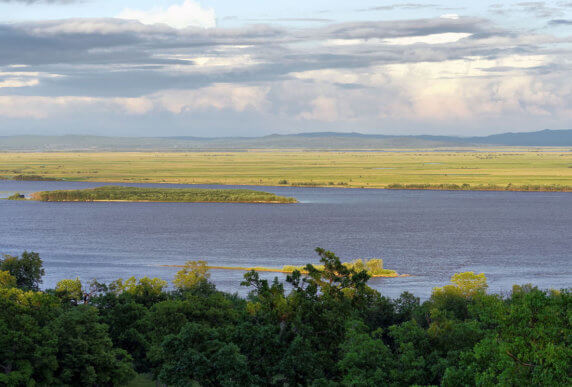Amur River

The Amur River, coursing through the pristine landscapes of the Russian Far East and Northeast Asia, stands not just as a geographical entity but as a lifeline for an intricate web of life. In this blog post, we delve into the ecological significance of the mighty Amur, exploring the rich biodiversity it nurtures and the critical role it plays in preserving the natural balance of the region.
The Amur River Basin: A Cradle of Life
Diverse Ecosystems Along the Banks
The Amur River basin is a mosaic of diverse ecosystems, ranging from expansive wetlands and floodplains to dense forests and mountainous terrain. This geographical diversity creates a haven for an extraordinary array of plant and animal species, making the region a focal point for biodiversity researchers and conservationists.
Wetlands: Sustaining Life and Biodiversity
The wetlands along the Amur River are among the largest in the world, providing crucial habitat for migratory birds, fish, and amphibians. These wetlands act as natural filters, improving water quality and regulating the river’s flow. The Amur’s wetland ecosystems play a vital role in maintaining the overall health of the river and its surroundings.
Keystone Species: Icons of the Amur’s Biodiversity
Amur Tiger: A Majestic Symbol

The Amur tiger, also known as the Siberian tiger, finds its home in the forests surrounding the Amur River. As one of the world’s most endangered big cats, the Amur tiger plays a pivotal role in shaping the ecosystem by controlling prey populations and ensuring the balance of the food chain.
Amur Leopard: Rare Beauty in Peril
The Amur leopard, adapted to the region’s cold climates, is another iconic species along the Amur. With a population on the brink of extinction, the conservation of the Amur leopard is not only crucial for preserving biodiversity but also for maintaining the ecological equilibrium of the Amur River basin.
Biodiversity Hotspot: Flora and Fauna Along the Amur
Unique Plant Species
The flora along the Amur River includes a variety of unique and endemic plant species. From the Siberian larch forests to the alpine meadows, the vegetation along the riverbanks contributes to the overall biodiversity of the region and provides habitats for numerous animal species.
Migratory Birds: A Symphony in the Skies
The Amur River serves as a vital stopover for migratory birds along the East Asian-Australasian Flyway. Millions of birds, including cranes, swans, and ducks, depend on the Amur’s wetlands for breeding, feeding, and rest during their long journeys, highlighting the international importance of the river for avian biodiversity.
Aquatic Ecosystems: Richness Below the Surface
Fish Diversity: Supporting Local Livelihoods
The Amur River hosts a diverse range of fish species, including salmon, sturgeon, and carp. These fish not only contribute to the ecological balance of the river but also play a significant role in sustaining local communities along the Amur, providing a vital source of food and livelihood.
Freshwater Biodiversity: A Global Treasure
The freshwater ecosystems of the Amur River are home to a plethora of aquatic species, many of which are unique to this region. From freshwater mollusks to endemic fish species, the river’s biodiversity contributes to the global richness of freshwater ecosystems.
Conservation Challenges: Threats to the Amur’s Biodiversity
Habitat Loss and Fragmentation
The rapid development and urbanization along the Amur River pose significant threats to the natural habitats of many species. Habitat loss and fragmentation disrupt the migratory routes of wildlife and contribute to the decline of biodiversity in the region.
Poaching and Illegal Wildlife Trade
The illegal trade of endangered species, including the Amur tiger and leopard, remains a pressing issue along the Amur River. Poaching threatens the survival of these iconic species and undermines conservation efforts aimed at protecting the region’s biodiversity.
Conservation Initiatives: Safeguarding the Amur’s Natural Heritage
Protected Areas: Safe Havens for Biodiversity
Efforts to preserve the Amur’s biodiversity include the establishment of protected areas and national parks along the river. These conservation areas serve as safe havens for endangered species and contribute to the overall health of the ecosystems within the Amur River basin.
International Collaboration: A Shared Responsibility
Given the transboundary nature of the Amur River, international collaboration is essential for effective conservation. Initiatives involving Russia, China, and other neighboring countries aim to address common challenges, promote sustainable practices, and ensure the long-term preservation of the Amur’s biodiversity.
Ecotourism: Balancing Conservation and Exploration
Responsible Tourism Practices
Ecotourism along the Amur provides an opportunity for people to connect with nature while supporting conservation efforts. Responsible tourism practices emphasize minimizing environmental impact, promoting education, and contributing to local communities, creating a harmonious balance between exploration and conservation.
Education and Awareness: Keys to Conservation
Educational programs and awareness campaigns play a crucial role in promoting the conservation of the Amur biodiversity. The Zeya River, Bureya, and Amgun rivers are some of the most significant tributaries of the Amur. By fostering an understanding of the delicate balance between human activities and the natural environment, these initiatives empower communities to actively participate in safeguarding their ecological heritage.
Conclusion
In conclusion, the Amur River emerges as a vital thread in the tapestry of global biodiversity. From the iconic Amur tiger to the unique plant species that line its banks, the river’s ecosystems are intertwined with the survival of countless species. As we navigate the complex landscape of conservation challenges, it is our shared responsibility to preserve the ecological marvel that is the Amur a sanctuary where nature’s heartbeat echoes through the valleys, forests, and waters.
Know More about Amur River.
What are The Religious Places of Amur River?
When Did The Amur River Basin Become a Focus?
Where is The Amur River Located?
Who Were The Key Historical Figures and Civilizations of The Amur River?
How to Reach Amur River?




